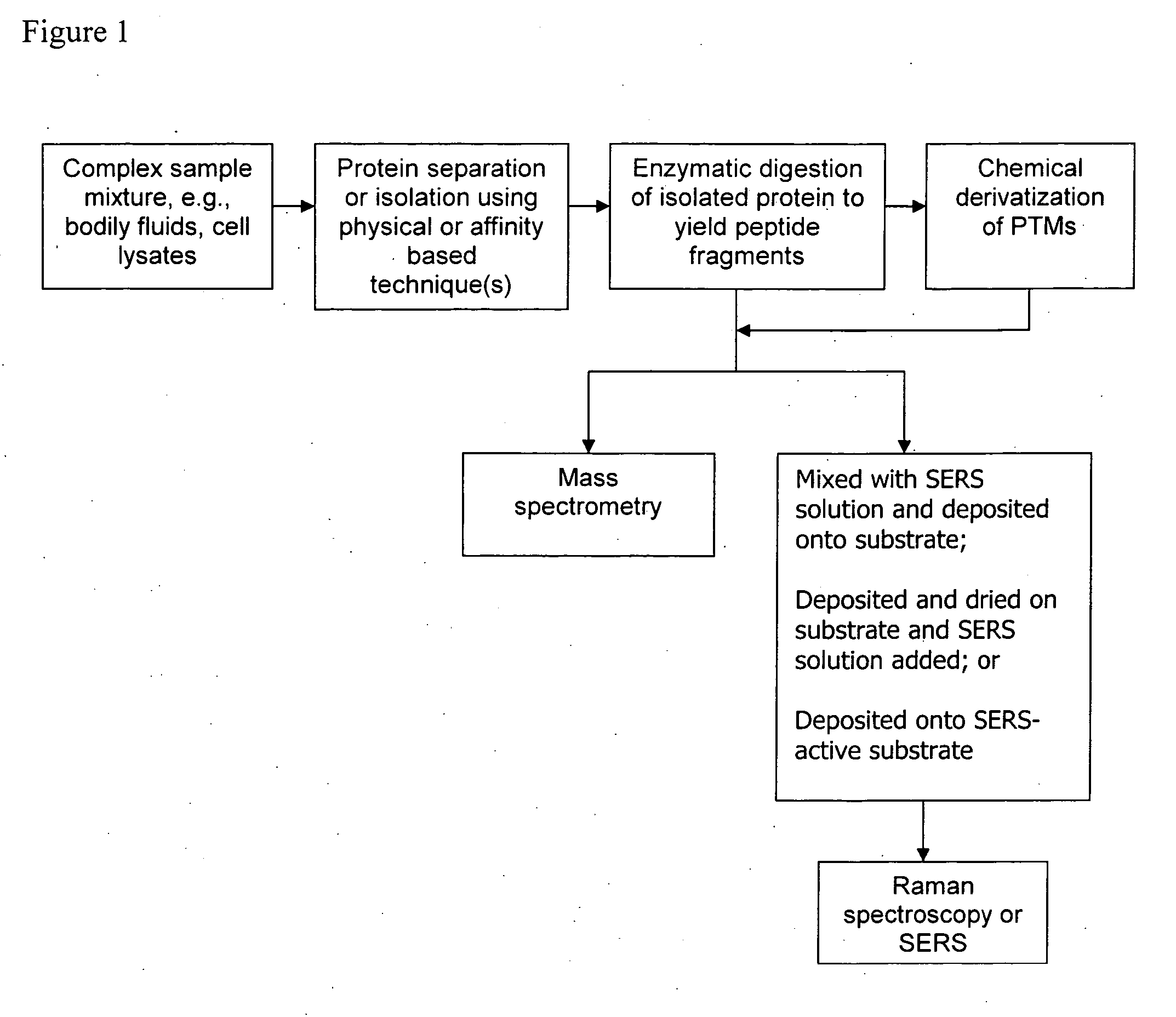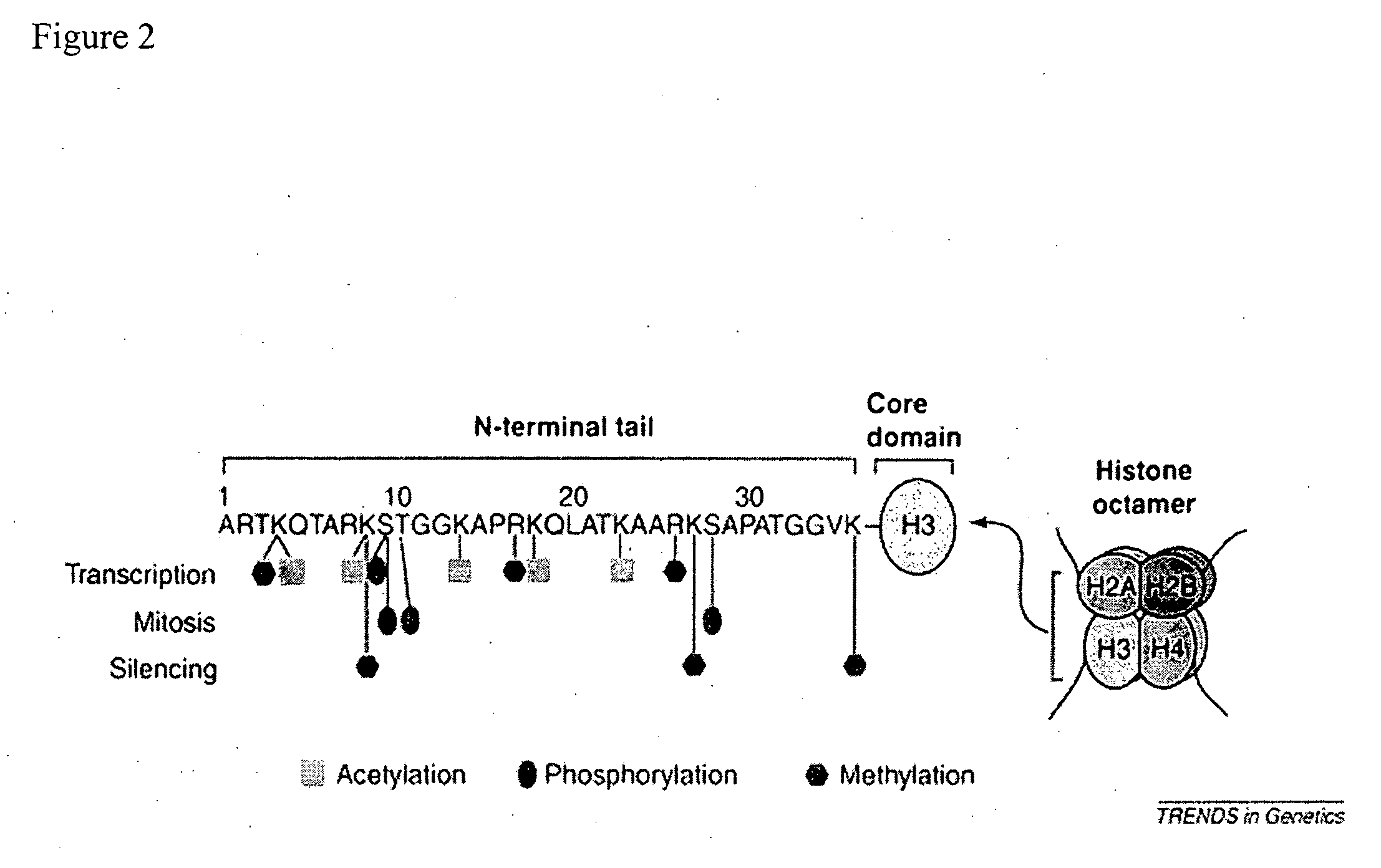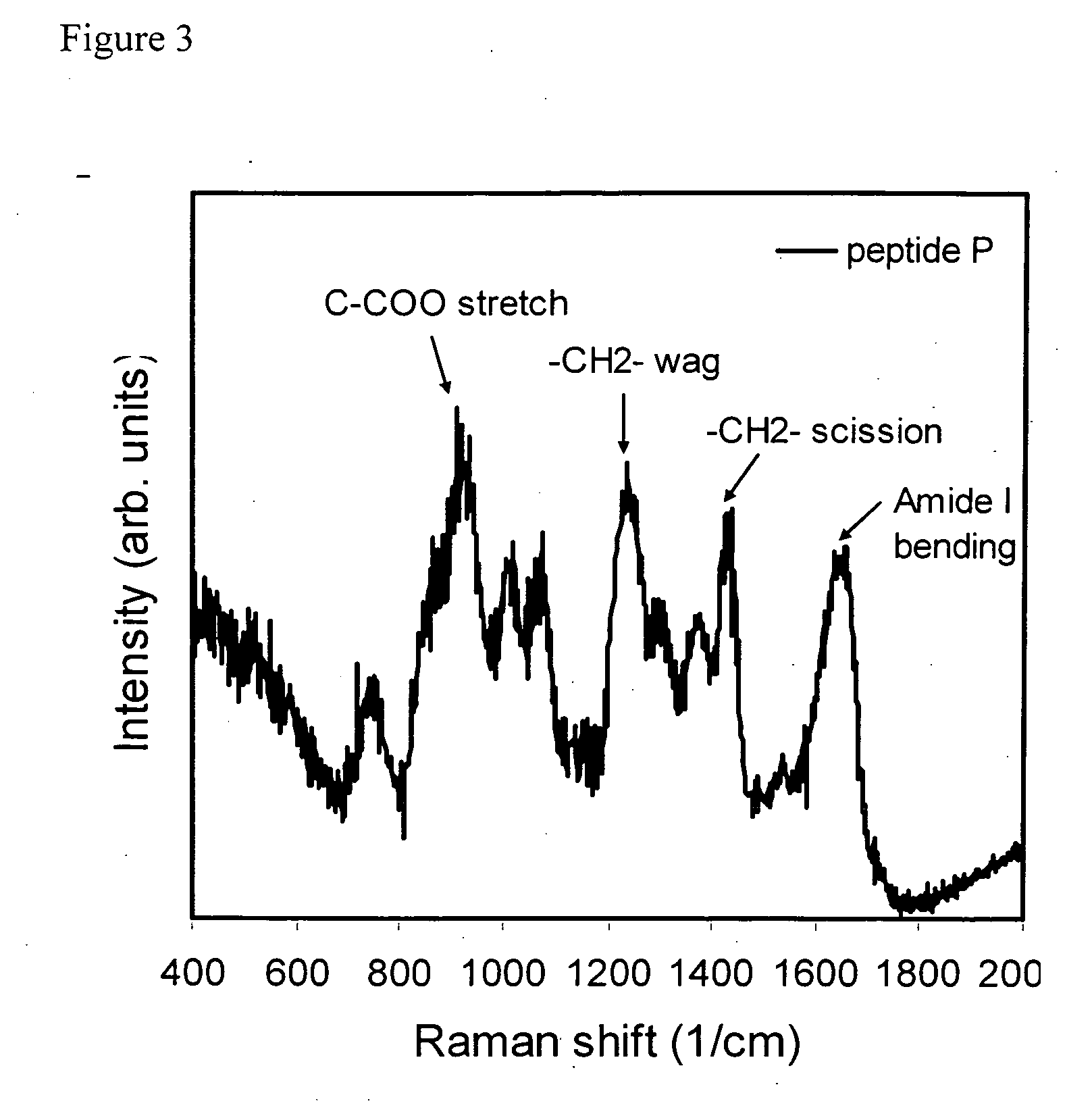Chemical derivatization, detection, and identification of peptide and protein modifications
a technology of peptide and protein modification and chemical derivatization, which is applied in the field oframan spectroscopy, can solve the problems of high-resolution, high-cost mass spectrometers, and require mass spectrometry analysis schemes that are not conducive to high-throughput analyses
- Summary
- Abstract
- Description
- Claims
- Application Information
AI Technical Summary
Problems solved by technology
Method used
Image
Examples
example 1
[0055] SERS experiments were performed as follows.
Colloidal Silver Preparation
[0056] Colloidal silver suspension was prepared by citrate reduction of silver nitrate as described in Lee and Meisel (P. C. Lee, D. J. Meisel, Phys. Chem. 86, 3391 (1982)). The suspension had a final silver concentration of 1.00 mM. The surface charge density (Zeta potential) for the colloidal silver particles, after diluting 20 times with deionized (DI) water, was found to be 62±3 mV using a Zetasizer (Zetasizer Nano, Malvern).
Peptide Synthesis
[0057] Peptides with and without modifications were synthesized using Solid Phase Peptide Synthesis (SPPS) methods with standard Fmoc / t-buty / trityl protection chemistries to build up a full-length peptide chain. The starting amino acid was bound to a solid resin support (usually polystyrene) and its alpha amino group was chemically “blocked” with the Fmoc protecting group. Reactive side-chains were blocked with either t-Butyl or Trityl groups. The alpha-amino...
example 2
[0060] The detection of post-translational modifications from biological samples was performed as follows.
Enzymatic Digestion of Histone H3
[0061] Lyophilized Histone H3 (obtained from Roche Applied Science, Inc.) was reconstituted in DI water to a concentration of 5 μg / μl. 5 μl of the reconstituted Histone H3 was digested with 250 ng of Endoproteinase Arg-C (enzyme substrate ration of 1:100 in a total volume of 50 μl of 50 mM ammonium bicarbonate buffer. Digestions were carried out at 37° C. for 16 hours. Digestion was halted by adding trifluoroacetic acid (TFA) to the digestion mixture at a final concentration of 0.5%.
HPLC Separation of Digested Histone H3
[0062] HPLC separation of the peptides from the digested Histone H3 was performed using an Alltech C18 column (150 mm×4.6 mm) using a two-step gradient. The gradients increased from 2 to 65% B over 63 min., stayed at 65% B for 7 min., and then increased from 65 to 85% B over 5 min. Solution A was 0.1% TFA in water and Soluti...
example 3
Chemical Derivatization of a Phospho Peptide
[0066] A sample of a phosphorylated peptide (KRpTIRR, DLDVPIPGRFDRRVpSVAAE, or IGEGpTYGVVYK) was re-suspended in a 4:3:1 water:DMSO:ethanol solution to a total volume of 10 μL. 4.6 μL f a saturated barium hydroxide solution and 1 μL of a 500 mM sodium hydroxide solution were added. The reaction was allowed to incubate at about 37° C. (or at room temperature) for two hours and the solution was vortexed every 20-30 minutes. The reaction was cooled to room temperature. Then, 10 μL of a freshly prepared 1 M cysteamine-HCl or 1 M trimethyl cysteamine-chloride in deionized water solution was added and incubation was allowed to continue at room temperature for 3-6 hours. The reaction was monitored for completion and when the endpoint was reached, the reaction solution was diluted to 100 μL with 0.5% trifluoroacetic acid (TFA). The reaction was then purified on a micro-column and the resulting products were analyzed by MALDI. SERS was performed ...
PUM
 Login to View More
Login to View More Abstract
Description
Claims
Application Information
 Login to View More
Login to View More - R&D
- Intellectual Property
- Life Sciences
- Materials
- Tech Scout
- Unparalleled Data Quality
- Higher Quality Content
- 60% Fewer Hallucinations
Browse by: Latest US Patents, China's latest patents, Technical Efficacy Thesaurus, Application Domain, Technology Topic, Popular Technical Reports.
© 2025 PatSnap. All rights reserved.Legal|Privacy policy|Modern Slavery Act Transparency Statement|Sitemap|About US| Contact US: help@patsnap.com



